
We view our farm as an integrated part of the surrounding ecosystem. Our goal is to steer the natural balance within our farm to reach an equilibrium point which favors the production of crops. Amazonian food webs are far from being fully understood. That being said, we can still employ several strategies to maximize the yield of our crops.
One strategy is to attract predators and parasites of species whose populations have become unbalanced. Another is to use selective plantings to confuse or repel herbivorous insects. We can even minimize damage to our crops by planting species that are preferred by herbivorous insects nearby. These are just a few examples of available strategies to maintain balance. Although not ideal, we may also use certified organic products as a fall-back strategy.

Planting Soil, Sacha Inchi Seeds, and a Jungle Nursery
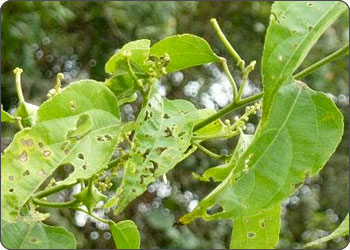
Though certain insects can diminish crop yields, it is better to understand the underlying dynamics of the offending species and to adapt, rather than to engage in mutually-destructive chemical warfare.
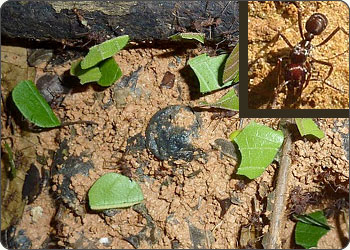
One species that requires special attention is the Leaf Cutter Ant. Leaf Cutters collect foliage for their own underground fungi farms. We would prefer that this foliage stay on the vines.
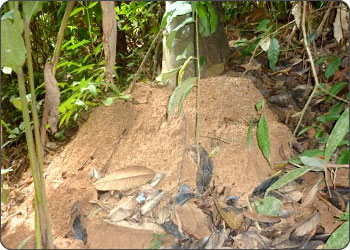
Leaf Cutter ants play an important role in the forest. When properly managed, these ants don’t pose a serious threat to crops.
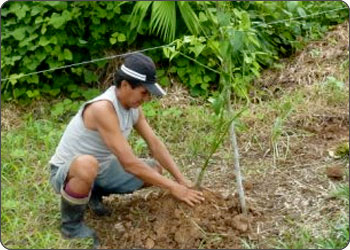
Recycled soda bottles make excellent barriers to protect young vines.
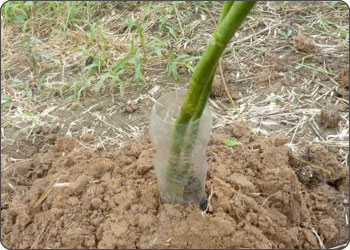
Placing the inverted soda bottle at the base of the plant makes it difficult for crawlers to make their way up the stalks.
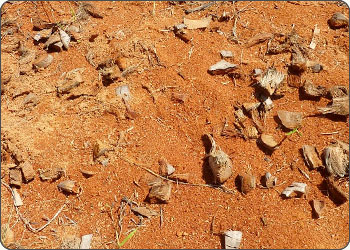
Shredded coconut husks make for excellent ground cover and discourage herbivorous insects.





